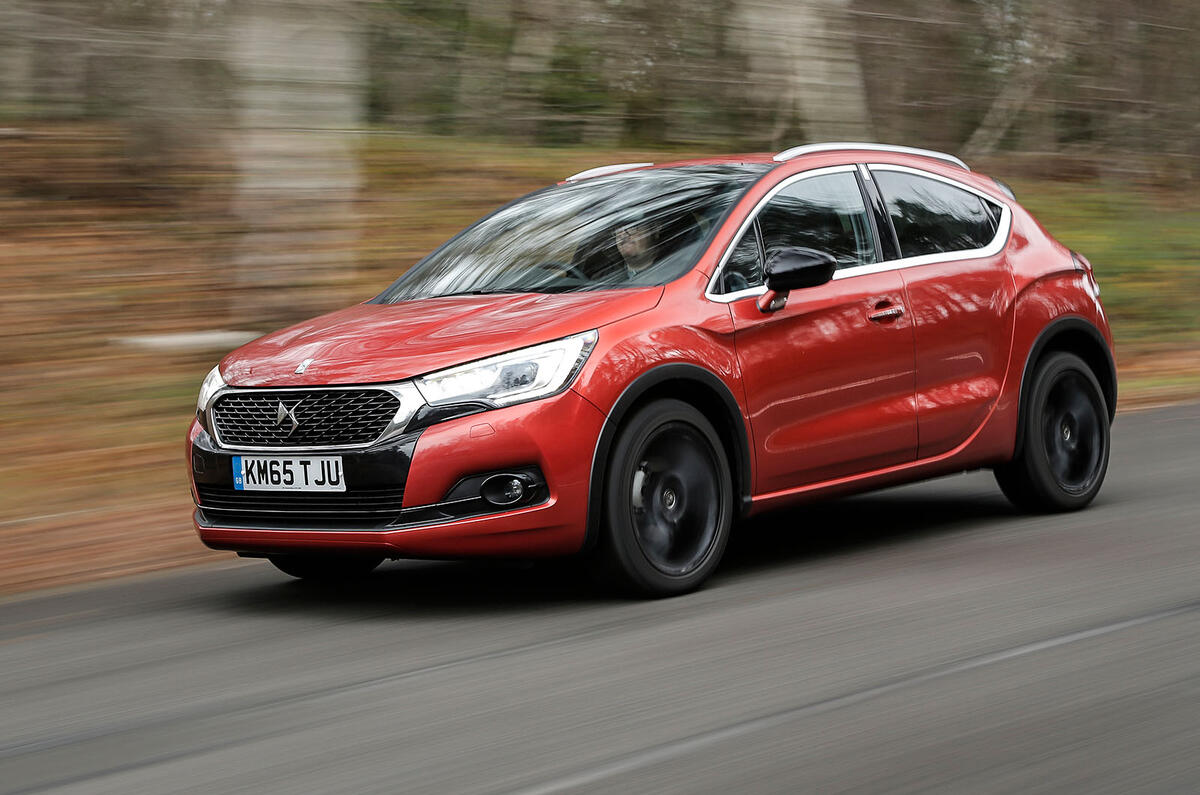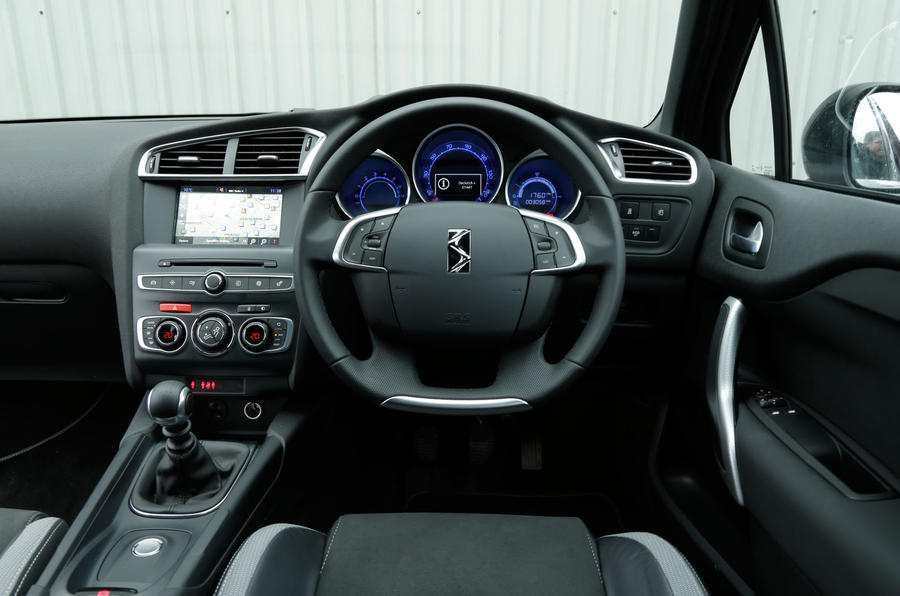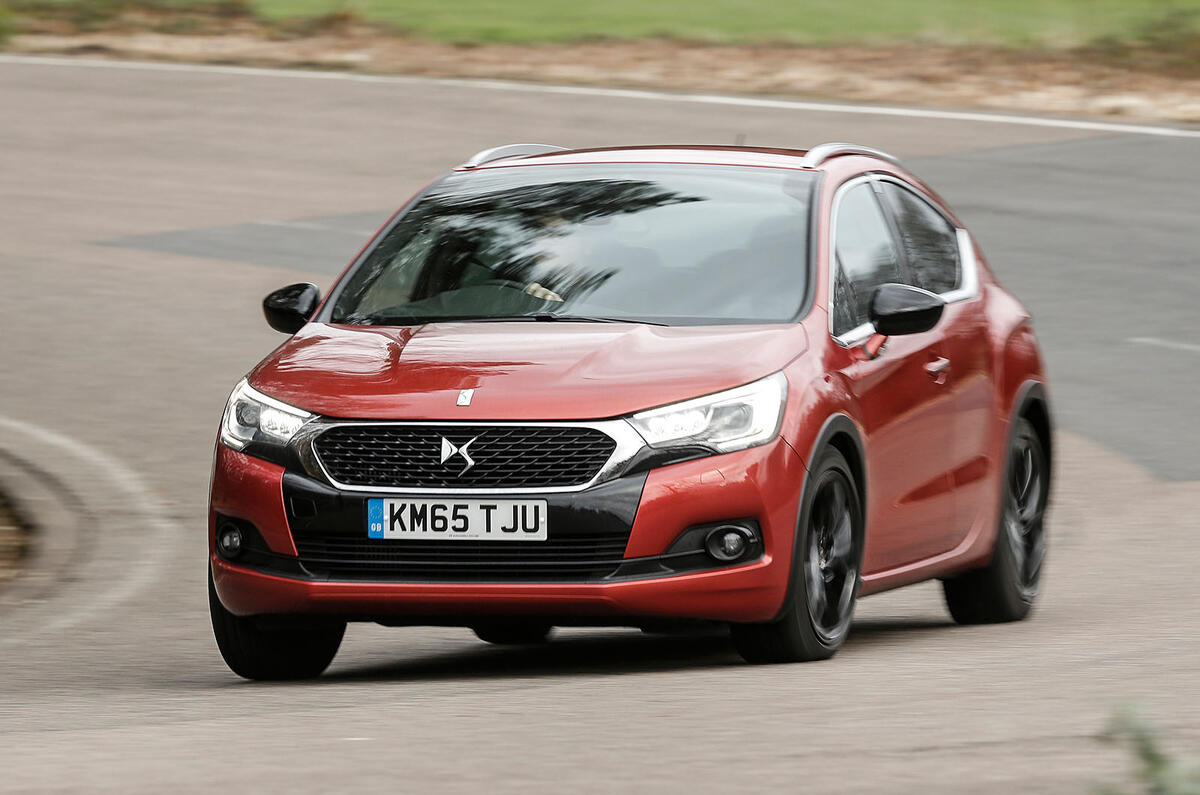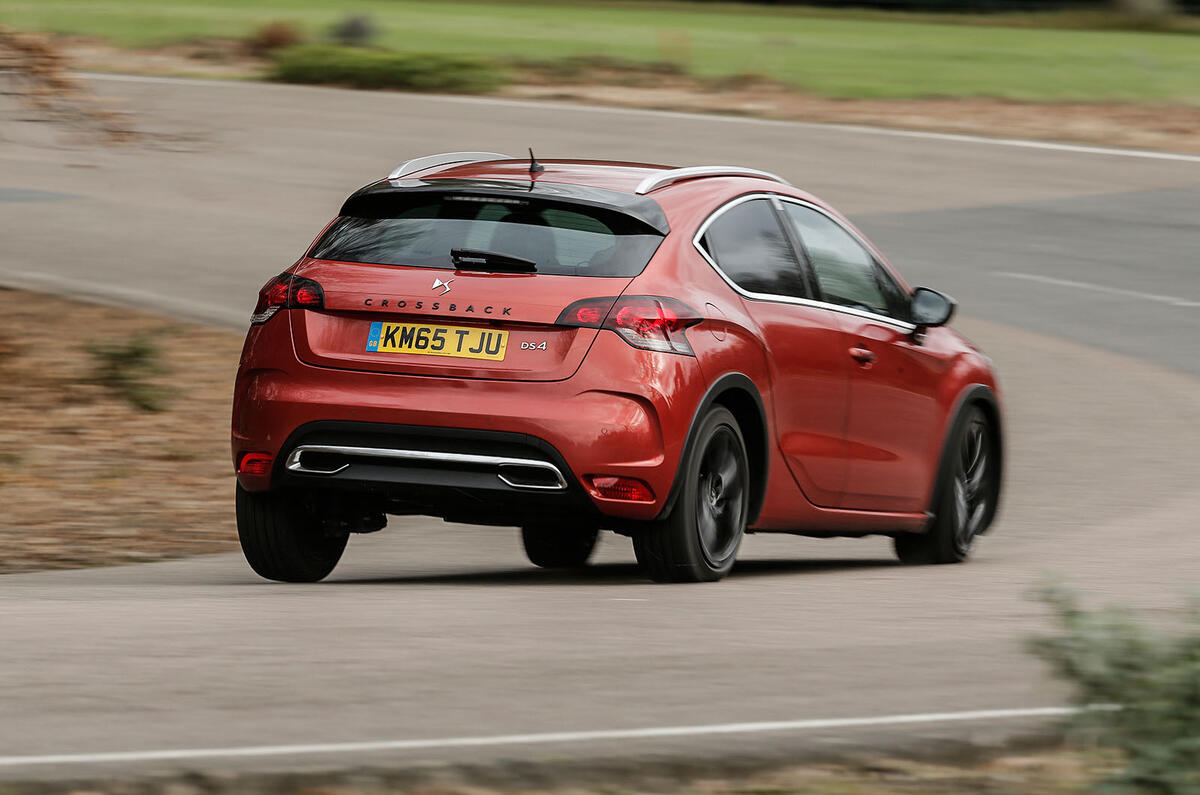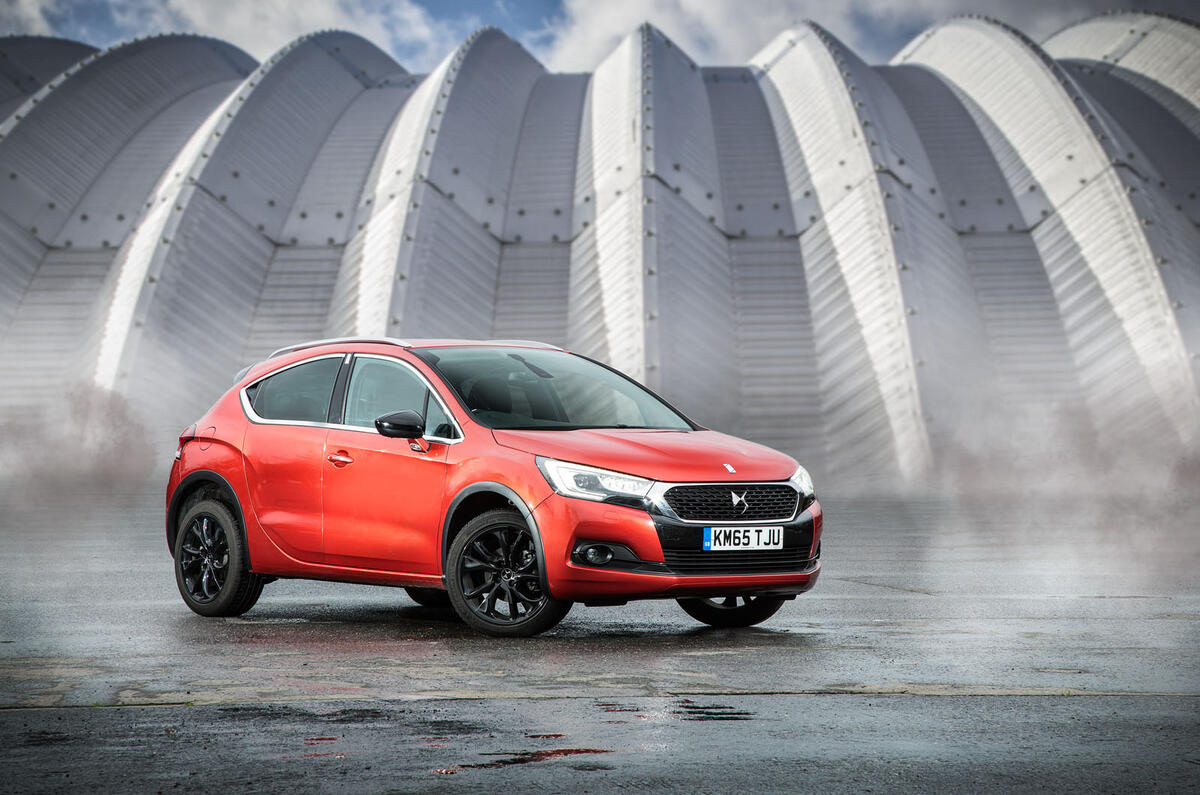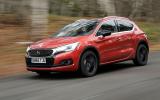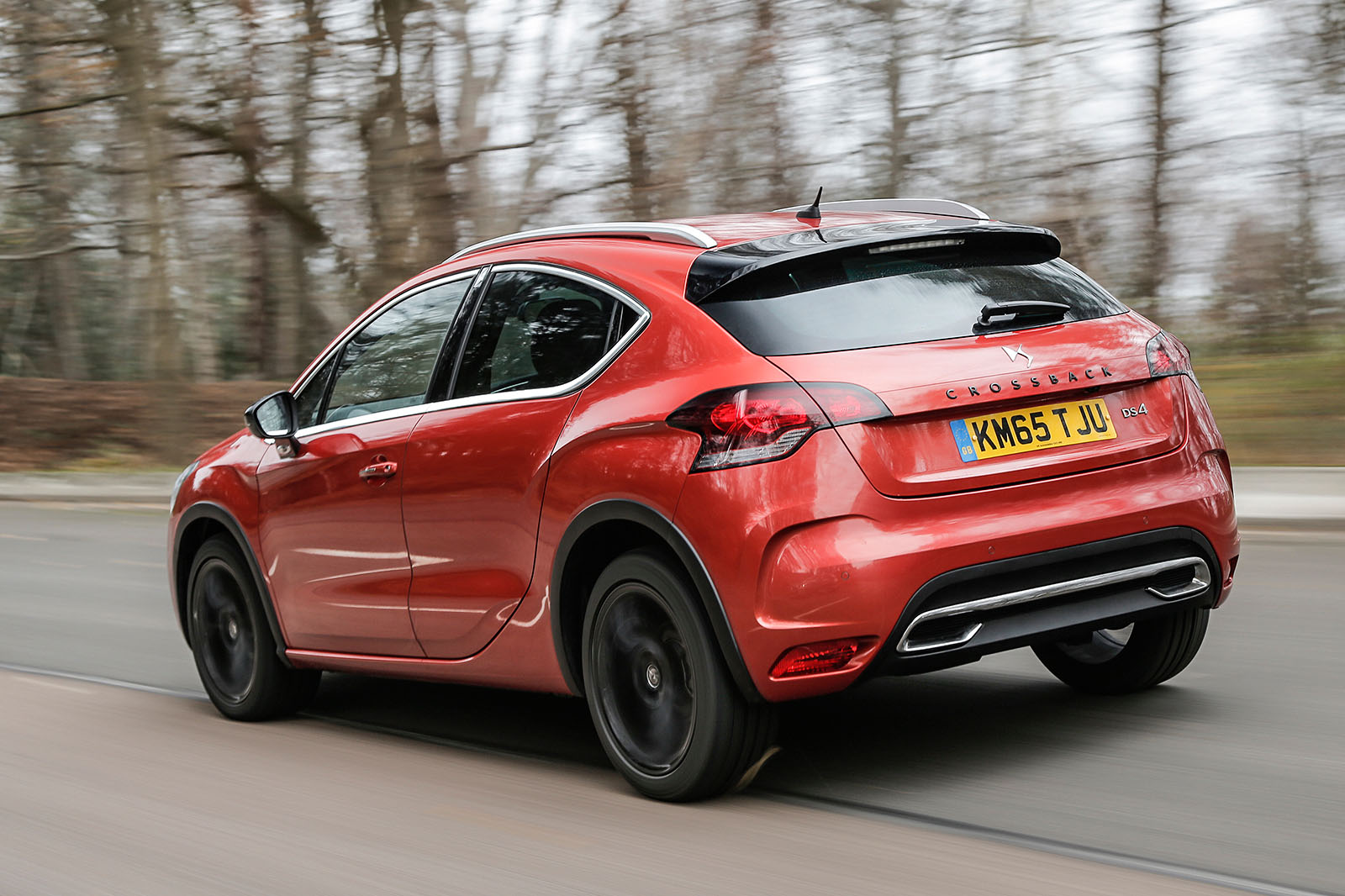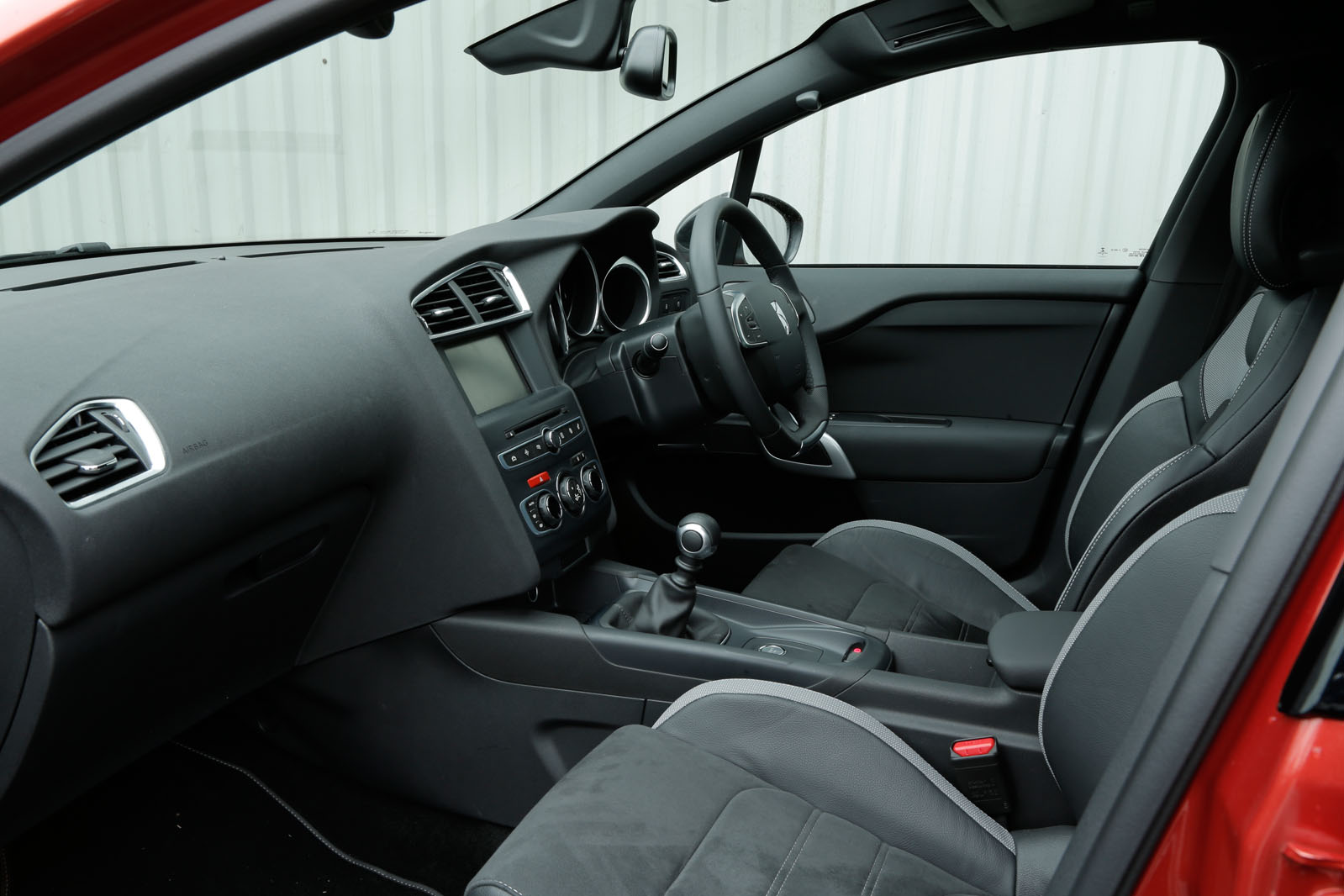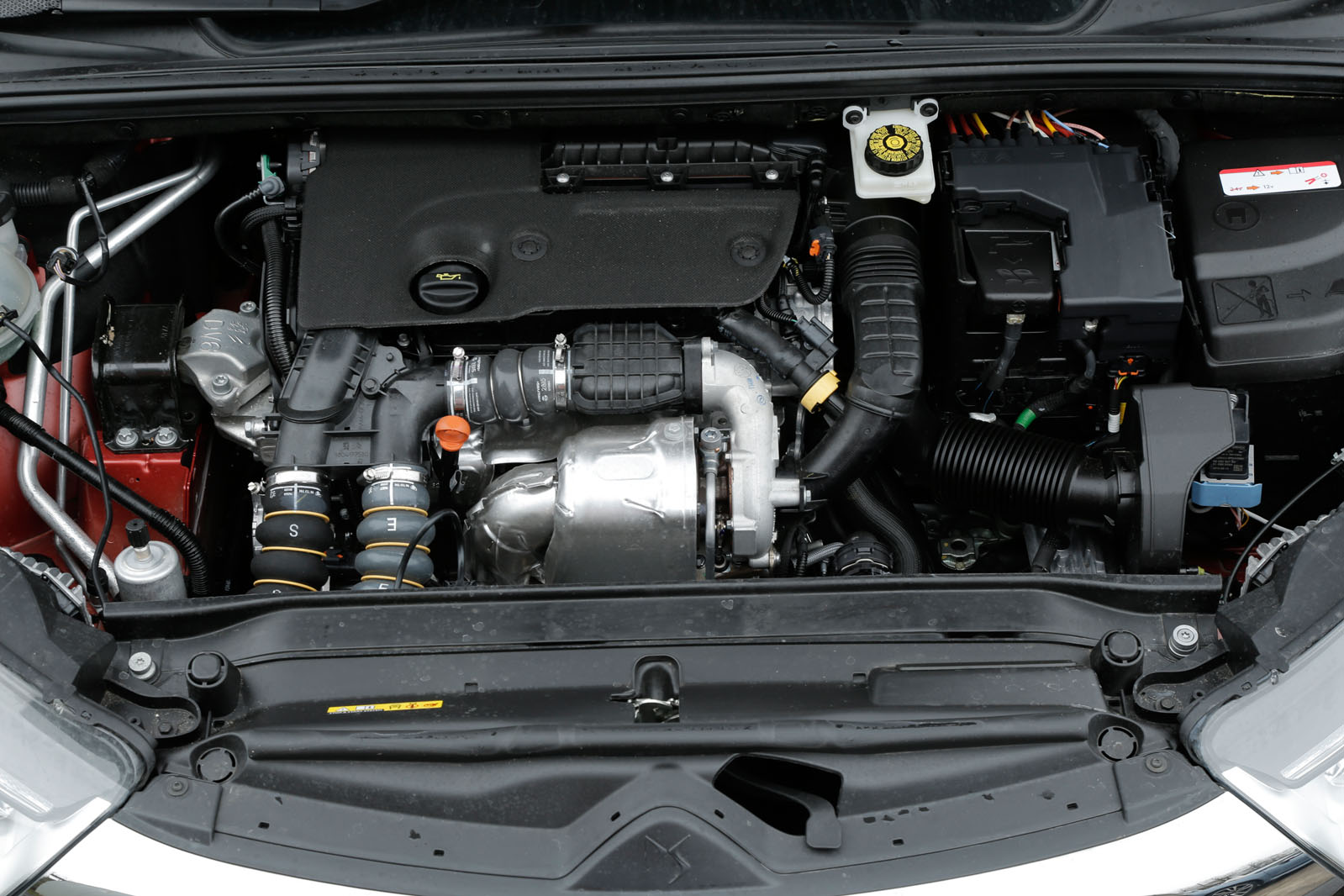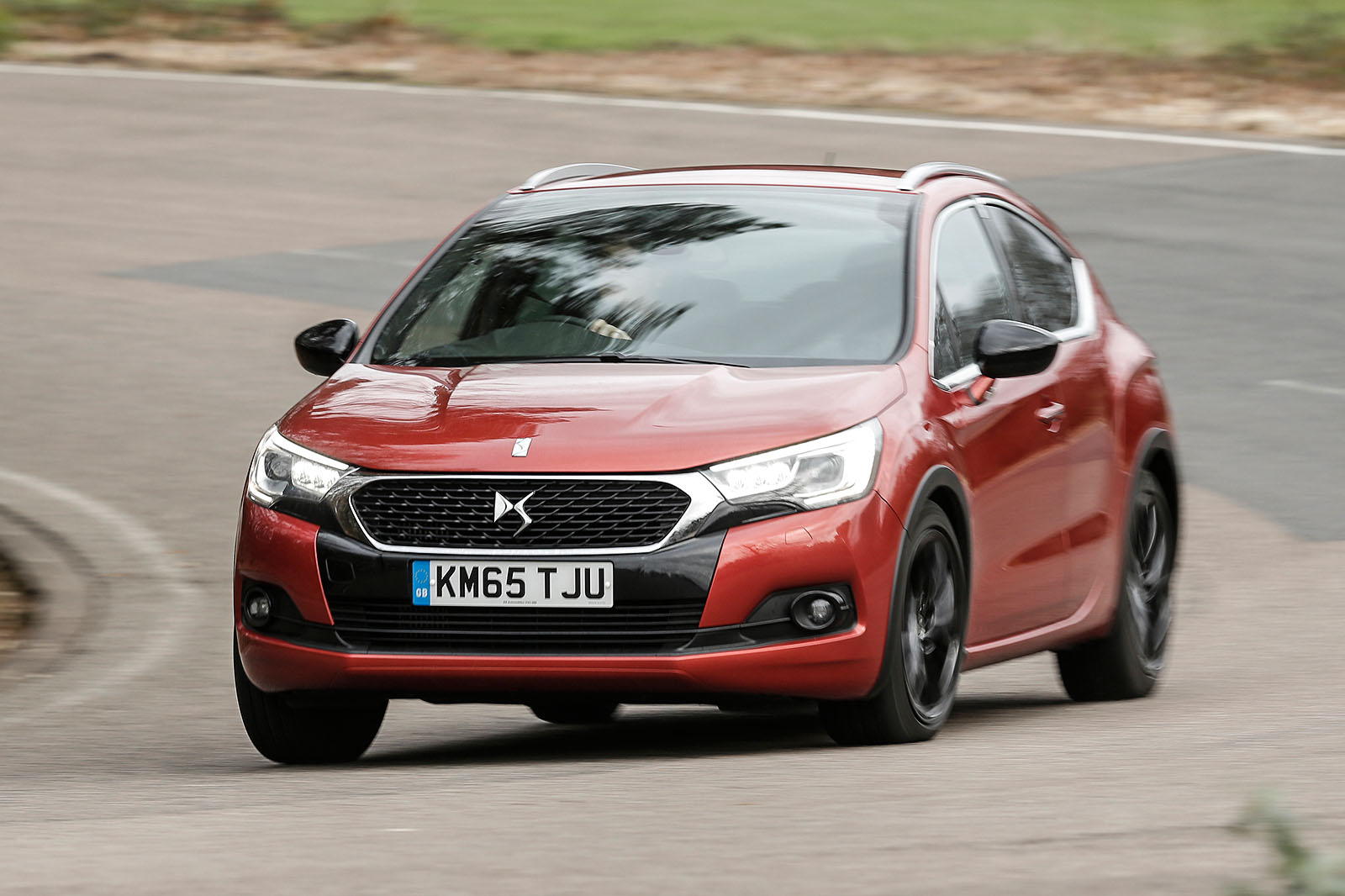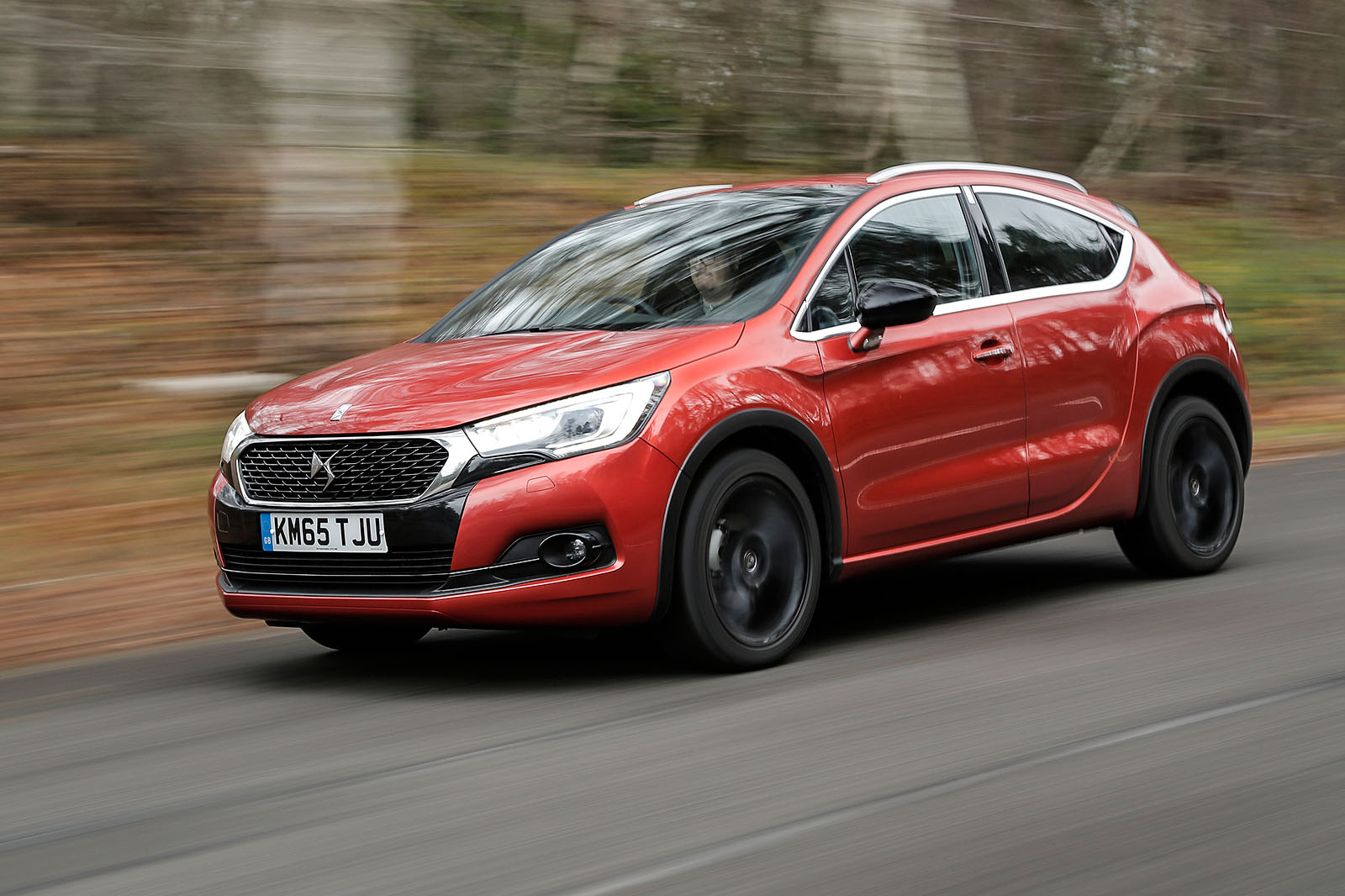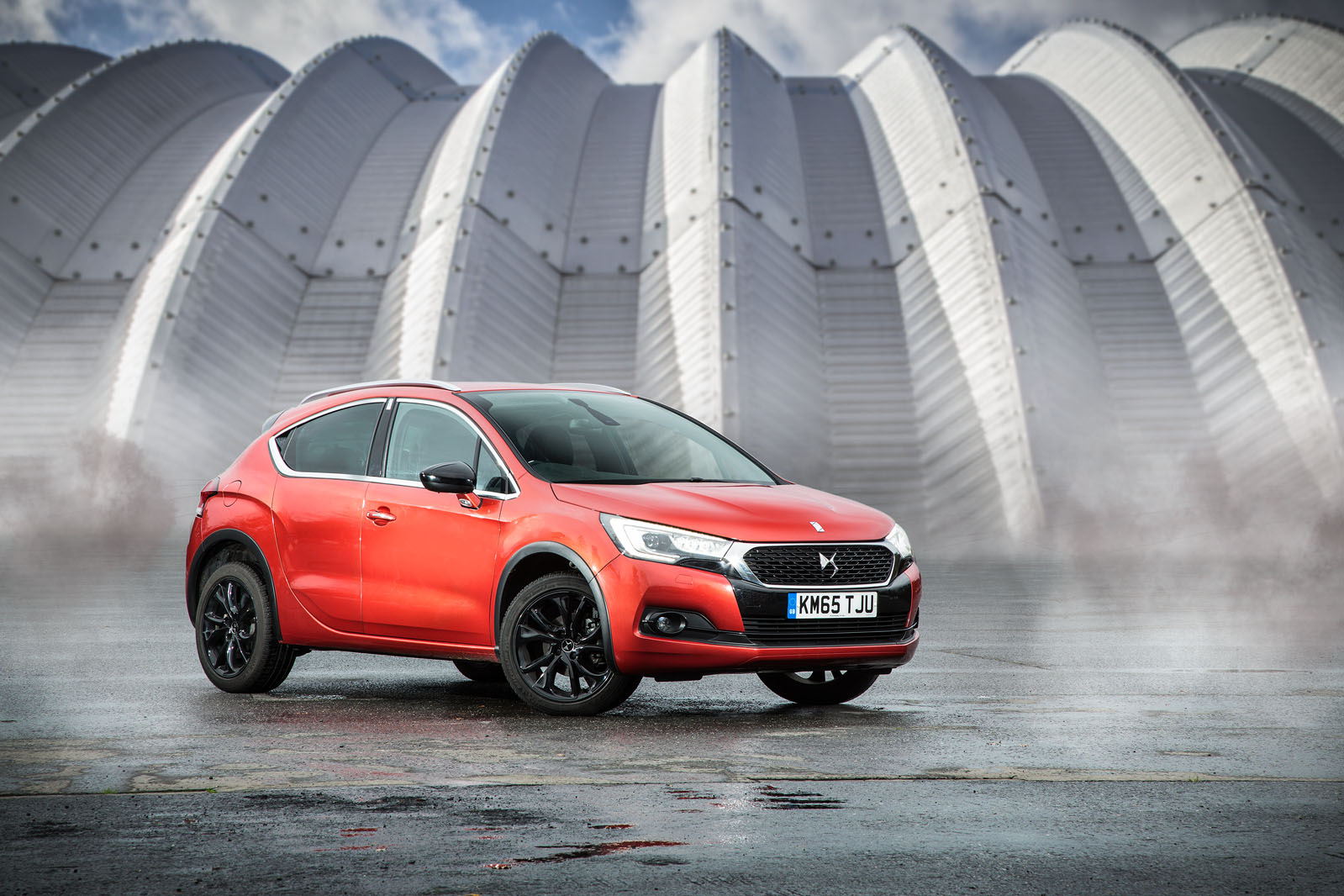Anyone half hoping for the sort of dramatic transformation enacted on high-spec versions of the 5 will be left disappointed by the thoroughly conventional cabin here.
Aside from the badge swap on the steering wheel, the vast majority of the 4’s fixtures and fittings are again shared with the Citroen C4.
On the one hand, that’s no bad thing. The C4’s interior is perfectly presentable and usable and not found particularly wanting in build quality or finish.
But there is precious little cosseting, interesting or inviting about it, either.
And if the intention of the DS brand is to better compete against the droves of hatchbacks and small crossovers now built by premium manufacturers, the 4 falls at the first hurdle here.
Its second sin, as before, is access to the cabin. On opening, most of us tend to judge how much space to give a car door by where the handle is and how close our leg is to the bodywork.
Unfortunately, that discounts the trailing edge styling appendage at the top of each rear door, which subsequently jabs you in the chest or arm like a disgruntled bouncer.
You’ll learn the lesson quickly enough, but as with learning to live with the fact that the back windows still don’t open, it’s not a lesson you particularly want to be forced to sit through.
Predictably, given the carried-over platform and wheelbase, the 4 doesn’t fix its predecessor’s main shortcoming, which was a shortage of space. The front is acceptable if you’re below 5ft 11in tall, helped along in the Crossback’s case by the moderately elevated driving position.
But in the rear, it’s no better than most five-door superminis, offering knee and head clearance only to those of decidedly average proportions. Slide a six-footer into the equation and the car starts to feel cramped in a hurry.
On the equipment front, there are two to choose from the standard DS4 Crossback and the Terre Rouge. The standard trim comes with 18in alloys, hill start assist, LED and xenon headlights, auto lights and wipers, and rear parking sensors. Inside you will find reversing camera, cruise control, sports seats and a 7.0in touchscreen infotainment system with DAB radio, Bluetooth, sat nav and smartphone integration.
Upgrade to the Terre Rouge trim and you will get leather seats, front parking sensors, bigger alloys, and aluminium sports pedals.
The new 7.0in touchscreen is a welcome addition to the 4, even if the software behind it lacks the verve and usability of rival systems. It is simple enough to operate, with physical shortcut buttons beneath the screen providing easy access to its major functions.
These include sat-nav (rudimentary in appearance yet perfectly serviceable), DAB tuner (ditto) and Bluetooth connectivity, including the hook-up to a mobile.
In this, Citroën has wisely gone the whole hog by including Mirror Screen technology, which duplicates an Android or iOS operating system on the display if you connect your smartphone via the USB port.
The manufacturer has also made its DS Connect box available. This provides automatic SOS assistance, servicing notifications, a car location service and a tracking system in case of theft.


